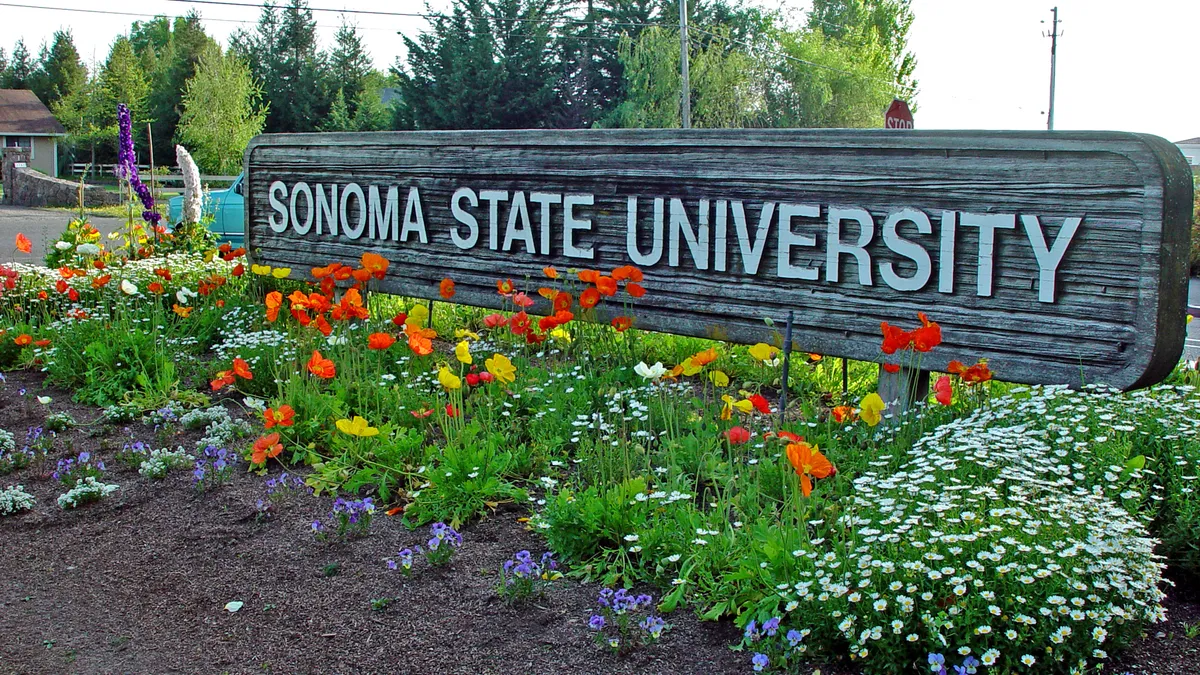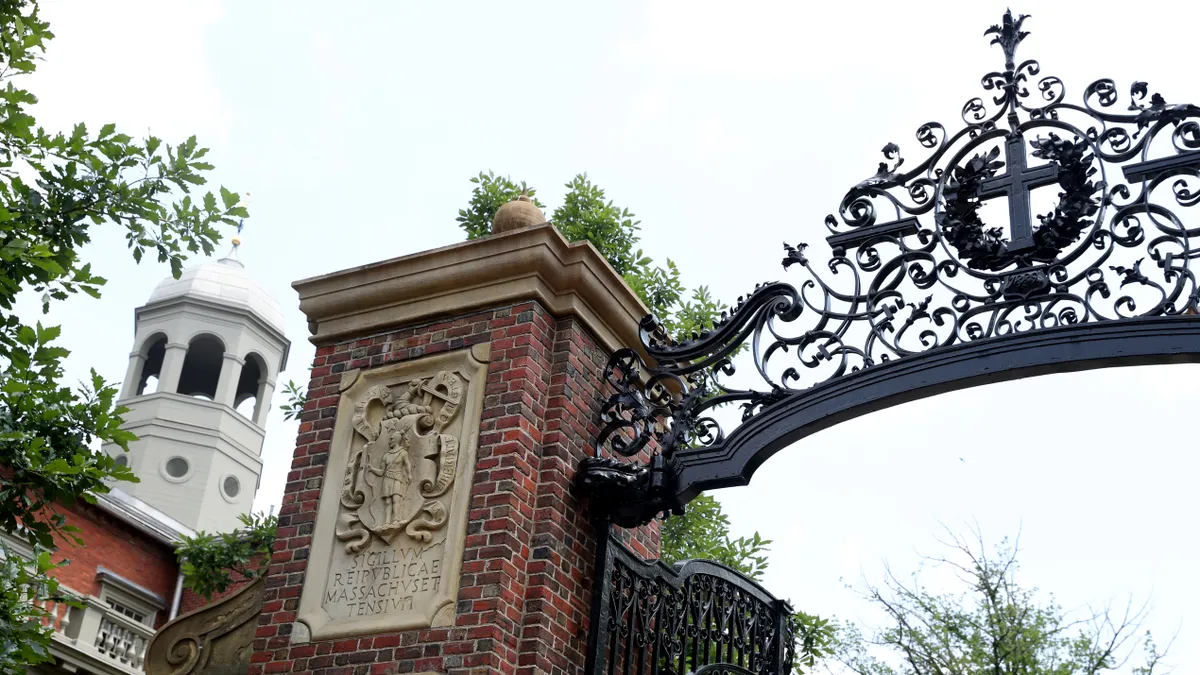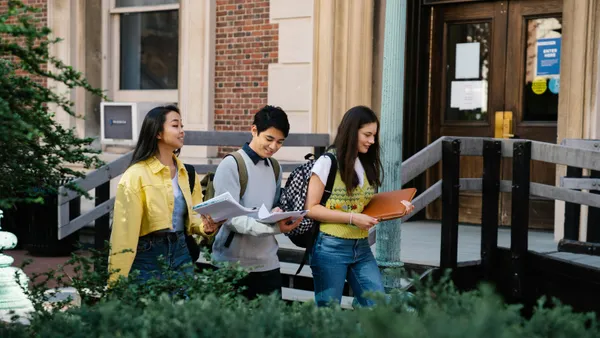Three years ago, Iowa Wesleyan University was on the brink of closing its doors for good. The college, which was founded in 1842 and is affiliated with the United Methodist Church, was struggling to overcome a set of problems endemic to other small liberal arts schools.
Though the school's enrollment of 616 students in the fall of 2018 was stable with the prior year's number, it still had nearly 230 fewer students than a decade prior. Some fundraising revenue never materialized, its then-president said in November 2018, leaving the school without enough in its coffers to remain open without new funding sources.
It's a familiar story. About six dozen nonprofit colleges have either closed or merged with other institutions since 2016, according to a Higher Ed Dive analysis. Many of them said flagging enrollment and climbing tuition discount rates put them under financial duress.
But despite Iowa Wesleyan's dire warnings about its future, the school managed to withstand those pressures. It went on a fundraising spree and restructured a $20 million federal loan, according to a recent report from the TIAA Institute. The school's leadership team is also hopeful that several recent changes — including focusing more on retention, strengthening student services and partnering with a nearby community college — will change the institution's prospects.
It might be too soon to know how much the changes will strengthen Iowa Wesleyan over the long term. Still, early improvements indicate its strategies may be worth considering for stressed colleges across the U.S.
"There aren't many schools that are willing to do the hard work, and they appear to be doing the hard work," said Jim Hundrieser, vice president for consulting and business development at the National Association of College and University Business Officers. "Hopefully they will be very successful and move from just surviving to thriving."
Becoming a 'student-ready' university
The cornerstone of Iowa Wesleyan's plan is simple. Officials decided to focus on retaining the learners they already had rather than chasing after those who are academically accomplished and wealthy. That meant devoting more resources to students from disadvantaged backgrounds.
"We need to stop saying we need to look for better students," said Iowa Wesleyan President Christine Plunkett, who took the helm of the university in August 2019.
The institution hired several student success coaches, who check in frequently with students to help them with obstacles that could derail their education. Iowa Wesleyan has also built up a student success center, which houses the coaches and other services such as peer tutoring and writing support.
"You don't bring in students for them to not succeed and to leave them with debt."

W. Joseph King
Co-author, "How to Run a College''
Focusing on retention is a good strategy, said W. Joseph King, co-author of "How to Run a College'' and president of Lyon College. He noted it's less expensive to keep a student than it is to recruit a new one. More importantly, he added, it helps the college fulfill its purpose. To Plunkett, the university found its "sweet spot" by catering to underserved students. Roughly half of the university's students are first-generation and half are non-White, officials said.
"You don't bring in students for them to not succeed and to leave them with debt," King said. "That's not the ideal scenario."
Iowa Wesleyan's efforts appear to be paying off. The college's first-year retention rate rose from 48% to 63% in just five years, according to the TIAA report.
Still, Iowa Wesleyan isn't out of hot water yet. In the 2020 fiscal year, the university posted a $4.1 million loss, up from $2.5 million the year before as expenses increased, according to tax documents. It marked the eighth-straight year that the school's expenses exceeded its revenue.
But officials expect to buck that trend in the upcoming academic year. They're also seeing signs of a strong student headcount in the fall.
Growing the student pipeline
Iowa Wesleyan is widening its funnel of students with athletics and admissions changes. The university switched this month from the NCAA's Division III conference to the National Association of Intercollegiate Athletics, which caters to small colleges.
The move will allow the university to resume offering athletic scholarships, which can be key to helping small schools recruit students. It's also a homecoming. Iowa Wesleyan left the NAIA after the 2011-2012 season to join the NCAA.
In retrospect, the original switch was ill-advised because of the loss of sports scholarships, university officials said. Enrollment plunged by nearly 100 students to 651 students the fall after the change, though it had been steadily sliding since at least 2008, according to federal data.
Although switching athletic associations doesn't always guarantee an increase in students, NACUBO's Hundrieser said it was a "smart move" for Iowa Wesleyan given its location. The NAIA has a heavy presence in the Midwest, Hundrieser said, which could lower travel costs and create more competitive opportunities.
"We need to stop saying we need to look for better students."

Christine Plunkett
President, Iowa Wesleyan
After failed merger talks with another liberal arts college, Iowa Wesleyan also recently partnered with neighboring Southeastern Community College. The duo are hoping that they can grow enrollment at their institutions as well as bolster the regional economy by working together, Plunkett said.
To form the partnership, the university and community college created a separate nonprofit called the Southeast Iowa Higher Education Alliance. Iowa Wesleyan is funding the administrative costs, while Southeastern Community College will award scholarships to some students who transfer from the two-year school, Inside Higher Ed reported earlier this year.
The partnership may also yield some cost-savings through shared personnel and the ability to negotiate contracts together.
It isn't the first public-private partnership in the state involving a liberal arts school and a community college. Last year, Clarke University announced it had joined forces with all 15 of Iowa's community colleges to create transfer pathways.
Thom Chesney, president of Clarke, said it can be difficult for universities and two-year schools to hammer out details of such a deal. But once it's formed, it can help the university partner plot out future enrollment.
"They'll be looking at that and say, 'We should almost be able to count on X number of students being transfer students through this agreement,'" Chesney said.
It also diversifies the university's enrollment sources, a feat other colleges are hoping to achieve, he said. "How do we diversify the types of students who are coming to us," he added, "so that demographic cliffs and things like that are softened?





















